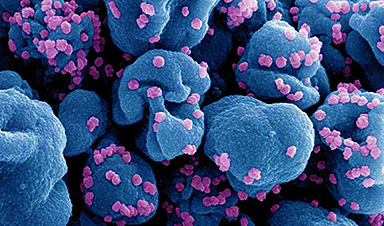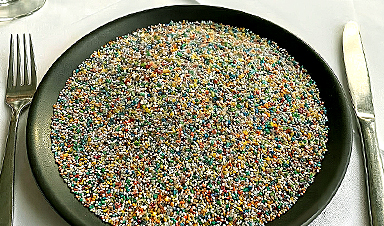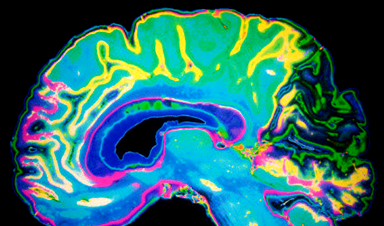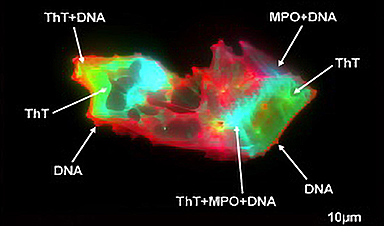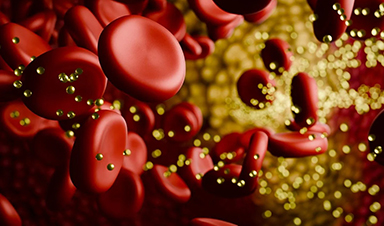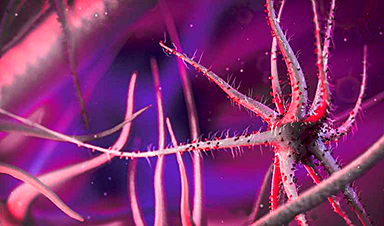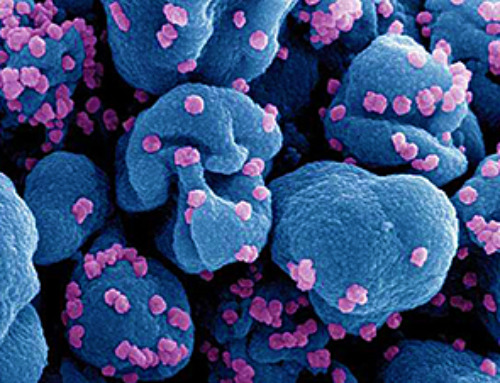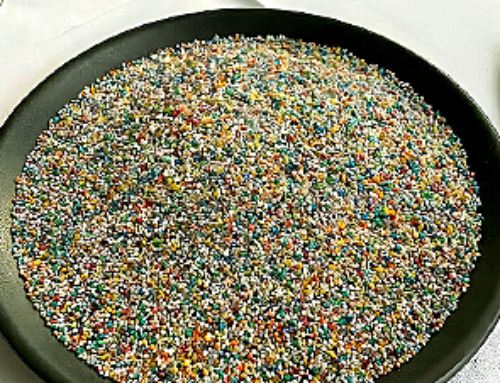Anita Saraf investigates mosquito saliva to understand how viruses like dengue and West Nile are transmitted, using mass spectrometry to identify potential targets for vaccines and treatments.
You might guess it'd be tough to extract saliva from a mosquito. And you'd be correct. Yet, because mosquitos spread disease via saliva, it's critical to sample and study.
But Anita Saraf doesn't collect mosquito spit herself — it gets delivered so she can discover its scientific secrets.
Saraf is the director of the Mass Spectrometry & Analytical Proteomics Laboratory at the University of Kansas, where she uses shotgun proteomics to analyze biological samples — basic science that underpins many drug therapies.
"Collecting saliva from these mosquitoes is challenging due to the small sample size, which is a common limitation in such experiments," she said. "Our collaborators with the USDA Agricultural Research Service put the mouth of the mosquitoes into a tube, then stimulate salivation and collect the saliva."

Now, with a new two-year grant of $250,000 per year from the U.S. Department of Agriculture's National Bio and Agro-Defense Facility, Saraf currently is analyzing these samples of noninfectious mosquito saliva in the fight against "arboviruses" — the term for viruses spread by arthropods like mosquitoes.
These include West Nile, yellow fever, dengue fever, Japanese encephalitis, and other viruses that can harm or kill people, animals, and plants. The USDA has an interest in veterinary applications for the findings, but Saraf's work could underpin therapies for people as well.
"The USDA wants to study how the virus affects the immune system and changes at the molecular level, particularly the proteome of mosquito saliva," Saraf said. "When a virus infects a mosquito, it alters the proteins and other basic components of the mosquito, similar to how malaria affects its human host as it progresses through different stages."
Proteomics Analysis Techniques
Saraf's proteomics analysis of the saliva succeeds because of using very efficient sample processing methods in tandem with shotgun analysis. This approach is effective with very low volumes or amounts of sample like, for instance, hard-to-obtain mosquito spit.
"At our mass spectrometry core at KU, we use shotgun proteomics, nanoscale liquid chromatography coupled with tandem mass spectrometry, or nLC-MS, which requires only a minimal amount of protein in the nano-gram range, making it ideal for these types of biological samples," Saraf said. "The sensitivity of our setup is crucial because, without it, we would need much larger protein quantities. Once we receive the saliva samples, we handle all the sample processing, preparation, and digestion to make them ready for mass-spectrometry analysis. We have the latest equipment and a special setup, which gives us high sensitivity, putting us at the forefront of this research."
The data is analyzed at KU mass spectrometry core to form a robust understanding of how the molecular properties of mosquito saliva can change under different conditions.
"After data collection, the analysis requires extensive post-processing, including interpretation and comparison, for which I have over 24 years of experience," Saraf said. "This is how we established a collaboration with USDA."
According to the KU researcher, her lab's shotgun approach of analyzing proteomes is robust and more sensitive than other methods, affording much more detailed time-course studies.
"We plan to study these changes under different conditions, including environmental variations in the mosquito after virus infection," she said. "The focus is on the mosquitos' saliva, which is critical because, like with the parasite (Plasmodium) that causes malaria, arboviruses are transmitted through the saliva when the mosquito bites."
Saraf and her team also will analyze saliva from a control group of mosquitoes not infected by the virus — but kept under the same feeding conditions and infection duration as the test group. The end goal is to identify specific proteins of interest for future host-vector-virus interaction studies, which could become potential targets for drug therapies.
Future Directions and Implications
To date, Saraf's team has worked with uninfected mosquitoes to establish baseline data. Once inactivation protocols are approved and authorized, the work will include samples from Biosafety Level 2 (BSL-2) arbovirus-infected mosquitoes.
"We'll identify differences and changes at the proteome level by comparing the control and infected samples at different stages," the KU researcher said. "The goal is to determine the protein changes that occur, as these can potentially serve as candidates for vaccine development. We'll first need to select candidates, which is why we are using controls under the same conditions without infection. We must carefully load equal amounts of protein from both to ensure accurate comparisons — essentially, we'll be able to compare 'apples to apples.'"
Saraf's work product is a list of the protein changes, both qualitative and quantitative, to strengthen the evidence available to fellow researchers and drug developers.
"Last time, our collaborators at USDA found the list very interesting, and it aligned with what has been reported in the literature," she said. "Selecting candidates for further study will be the goal."
The study was funded by the U.S. Department of Agriculture.
News
Platelet-inspired nanoparticles could improve treatment of inflammatory diseases
Scientists have developed platelet-inspired nanoparticles that deliver anti-inflammatory drugs directly to brain-computer interface implants, doubling their effectiveness. Scientists have found a way to improve the performance of brain-computer interface (BCI) electrodes by delivering anti-inflammatory drugs directly [...]
After 150 years, a new chapter in cancer therapy is finally beginning
For decades, researchers have been looking for ways to destroy cancer cells in a targeted manner without further weakening the body. But for many patients whose immune system is severely impaired by chemotherapy or radiation, [...]
Older chemical libraries show promise for fighting resistant strains of COVID-19 virus
SARS‑CoV‑2, the virus that causes COVID-19, continues to mutate, with some newer strains becoming less responsive to current antiviral treatments like Paxlovid. Now, University of California San Diego scientists and an international team of [...]
Lower doses of immunotherapy for skin cancer give better results, study suggests
According to a new study, lower doses of approved immunotherapy for malignant melanoma can give better results against tumors, while reducing side effects. This is reported by researchers at Karolinska Institutet in the Journal of the National [...]
Researchers highlight five pathways through which microplastics can harm the brain
Microplastics could be fueling neurodegenerative diseases like Alzheimer's and Parkinson's, with a new study highlighting five ways microplastics can trigger inflammation and damage in the brain. More than 57 million people live with dementia, [...]
Tiny Metal Nanodots Obliterate Cancer Cells While Largely Sparing Healthy Tissue
Scientists have developed tiny metal-oxide particles that push cancer cells past their stress limits while sparing healthy tissue. An international team led by RMIT University has developed tiny particles called nanodots, crafted from a metallic compound, [...]
Gold Nanoclusters Could Supercharge Quantum Computers
Researchers found that gold “super atoms” can behave like the atoms in top-tier quantum systems—only far easier to scale. These tiny clusters can be customized at the molecular level, offering a powerful, tunable foundation [...]
A single shot of HPV vaccine may be enough to fight cervical cancer, study finds
WASHINGTON -- A single HPV vaccination appears just as effective as two doses at preventing the viral infection that causes cervical cancer, researchers reported Wednesday. HPV, or human papillomavirus, is very common and spread [...]
New technique overcomes technological barrier in 3D brain imaging
Scientists at the Swiss Light Source SLS have succeeded in mapping a piece of brain tissue in 3D at unprecedented resolution using X-rays, non-destructively. The breakthrough overcomes a long-standing technological barrier that had limited [...]
Scientists Uncover Hidden Blood Pattern in Long COVID
Researchers found persistent microclot and NET structures in Long COVID blood that may explain long-lasting symptoms. Researchers examining Long COVID have identified a structural connection between circulating microclots and neutrophil extracellular traps (NETs). The [...]
This Cellular Trick Helps Cancer Spread, but Could Also Stop It
Groups of normal cbiells can sense far into their surroundings, helping explain cancer cell migration. Understanding this ability could lead to new ways to limit tumor spread. The tale of the princess and the [...]
New mRNA therapy targets drug-resistant pneumonia
Bacteria that multiply on surfaces are a major headache in health care when they gain a foothold on, for example, implants or in catheters. Researchers at Chalmers University of Technology in Sweden have found [...]
Current Heart Health Guidelines Are Failing To Catch a Deadly Genetic Killer
New research reveals that standard screening misses most people with a common inherited cholesterol disorder. A Mayo Clinic study reports that current genetic screening guidelines overlook most people who have familial hypercholesterolemia, an inherited disorder that [...]
Scientists Identify the Evolutionary “Purpose” of Consciousness
Summary: Researchers at Ruhr University Bochum explore why consciousness evolved and why different species developed it in distinct ways. By comparing humans with birds, they show that complex awareness may arise through different neural architectures yet [...]
Novel mRNA therapy curbs antibiotic-resistant infections in preclinical lung models
Researchers at the Icahn School of Medicine at Mount Sinai and collaborators have reported early success with a novel mRNA-based therapy designed to combat antibiotic-resistant bacteria. The findings, published in Nature Biotechnology, show that in [...]
New skin-permeable polymer delivers insulin without needles
A breakthrough zwitterionic polymer slips through the skin’s toughest barriers, carrying insulin deep into tissue and normalizing blood sugar, offering patients a painless alternative to daily injections. A recent study published in the journal Nature examines [...]



